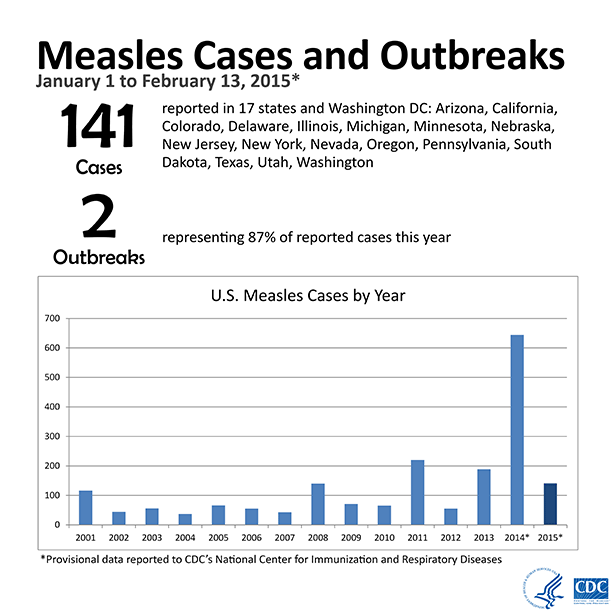
The first measles vaccination was developed in the U.S. in 1954. That vaccination was improved in 1968, and we’ve been using the same ever since. The prevalence of vaccine use has greatly diminished the number of cases reported each year, but the recent outbreak has brought into question vaccination practices and effectiveness. The important things to remember, per the CDC, are these:
- The majority of the people who got measles were unvaccinated.
- Measles can spread when it reaches a community in the U.S. where groups of people are unvaccinated.
- Travelers with measles continue to bring the disease into the U.S.
- Measles is still common in many parts of the world including some countries in Europe, Asia, the Pacific, and Africa.
Although typically mild, 1 to 2 people out of every 1000 diagnosed with measles will die. This is usually due to the rare onset of encephalitis. However, the disease is incredibly uncomfortable as the symptoms include a high fever, rash, runny nose, and watery eyes.
It is also one of the most contagious diseases; being spread by direct contact and through contact with droplets exhaled by those infected. (The recent outbreak that originated in California is believed to have taken place at Disneyland.)
The American Academy of Pediatrics recommends vaccinating your children for measles and other childhood illnesses. For more information about recommendations for protecting your children during a measles outbreak can be found here.
Leave a Reply